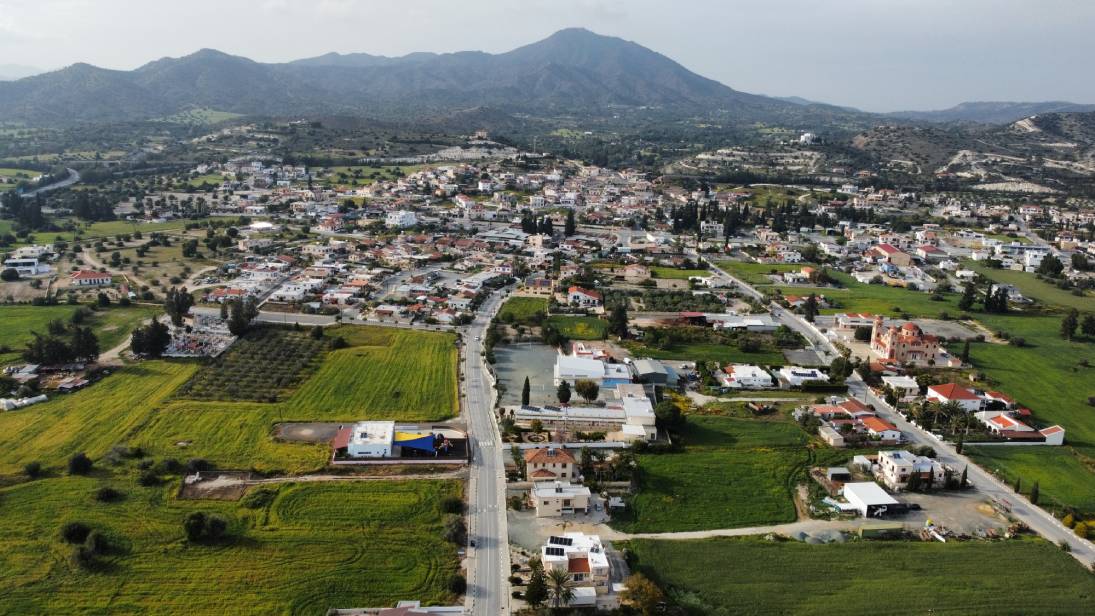
Village Overview
Anglisides is a picturesque village in the Larnaca district, located at an altitude of 140 meters above sea level, approximately 17 km southwest of Larnaca and 6 km northeast of Kofinou. Situated between Larnaca and Stavrovouni, the village is known for its abundant olive trees, which have long defined its landscape. Among its natural treasures is a 700-year-old olive tree that stands as a silent guardian of the land.
Geology & Natural Environment
The village is surrounded by gentle, rounded chalk hills in the south, while to the north, the rugged lava terrain begins to emerge. The soil consists mainly of chalk, marl-chalk formations, marls, and more recent deposits. Further north, one can find extensions of the Troodos igneous complex.
Climate & Agriculture
With a Mediterranean climate and an average annual rainfall of 450 millimeters, Anglisides provides fertile ground for the cultivation of barley, legumes, fodder crops, almond trees, olives, carob trees, and vineyards. Olive trees, in particular, have played a significant role in the village’s agricultural history—Italian traveler Mariti noted in the 18th century that the olive trees were planted symmetrically and had trunks so thick that two men together could not wrap their arms around them. The village also maintains a relatively developed livestock farming sector.
Transport & Development
Anglisides lies adjacent to the main Limassol–Larnaca road, ensuring good accessibility. Although there is no direct road connecting it to northern neighboring villages, several paved roads provide links to southern villages and the coastline, which is just 8 km away.
Its strategic location and improved road infrastructure have facilitated the village’s development, contributing to population retention and economic growth. Businesses, services, and workshops operate within the community, offering employment opportunities for locals.
Population Growth
Over the years, Anglisides has seen steady population increases. From 268 residents in 1881, it reached 1,253 in 2021. In 1975, the Turkish Cypriot population left the village. Since the 1980s, the local economy and infrastructure improvements have encouraged population growth, turning Anglisides into a key community in the region.



